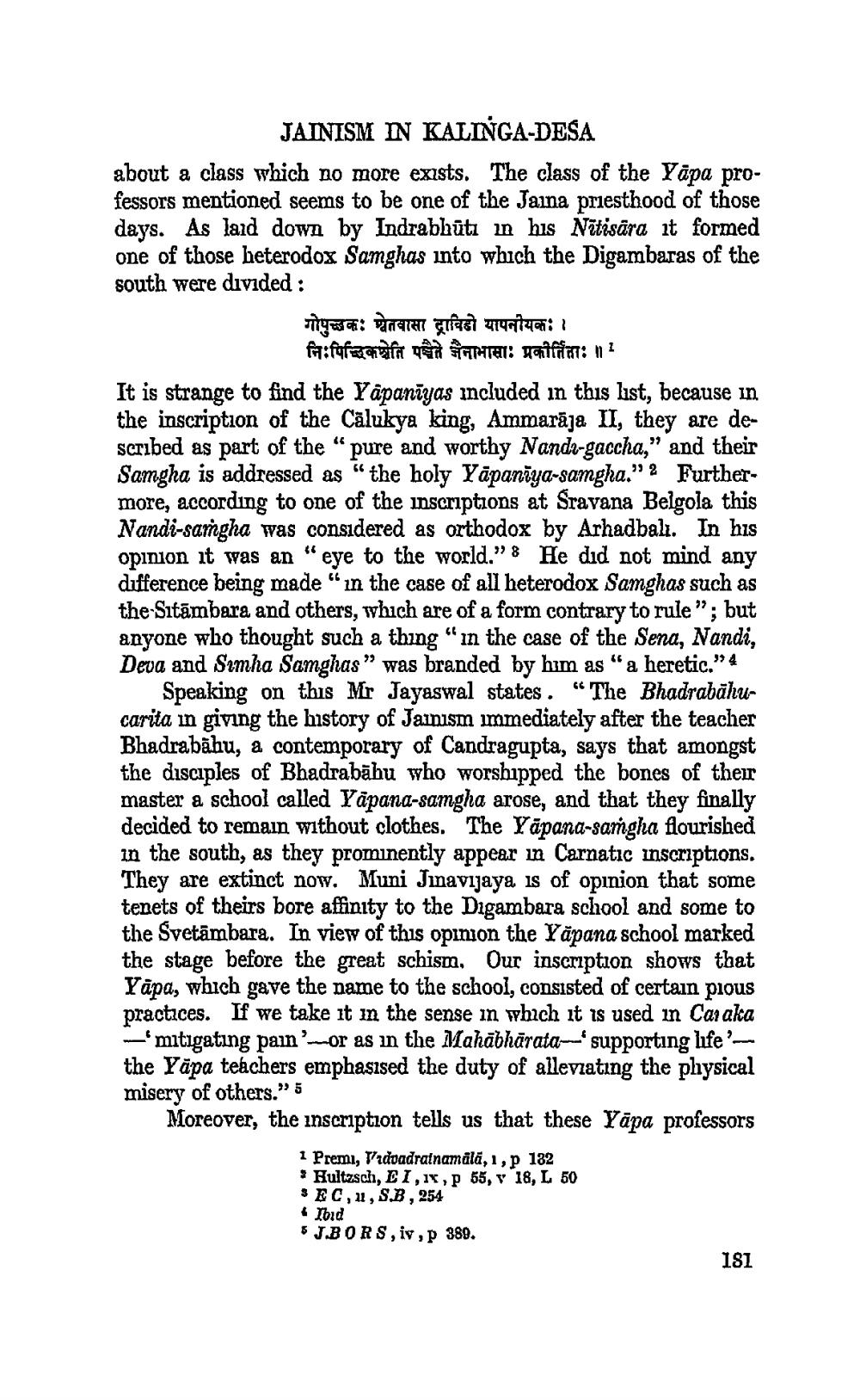________________ JAINISM IN KALINGA-DESA about a class which no more exists. The class of the Yapa professors mentioned seems to be one of the Jaina priesthood of those days. As laid down by Indrabhuti in his Nitisara it formed one of those heterodox Samghas into which the Digambaras of the south were divided : गोपुछकः श्वेतवासर द्राविडो यापनीयकः / faffecift ftat: afia: 12 It is strange to find the Yapaniyas included in this list, because in the inscription of the Calukya king, Ammaraja II, they are described as part of the "pure and worthy Nanda-gaccha," and their Samgha is addressed as "the holy Yapaniya-samgha." 2 Furthermore, according to one of the inscriptions at Sravana Belgola this Nandi-samgha was considered as orthodox by Arhadbali. In his opinion it was an "eye to the world." He did not mind any difference being made in the case of all heterodox Samghas such as the Sitambara and others, which are of a form contrary to rule"; but anyone who thought such a thing in the case of the Sena, Nandi, Deva and Simha Samghas" was branded by him as "a heretic."4 Speaking on this Mr Jayaswal states. "The Bhadrabahucarita in giving the history of Jainism immediately after the teacher Bhadrababu, a contemporary of Candragupta, says that amongst the disciples of Bhadrabahu who worshipped the bones of their master a school called Yapana-samgha arose, and that they finally decided to remain without clothes. The Yapana-sangha flourished in the south, as they prominently appear in Carnatic inscriptions. They are extinct now. Muni Jinavijaya is of opinion that some tenets of theirs bore affinity to the Digambara school and some to the Svetambara. In view of this opinion the Yapana school marked the stage before the great schism. Our inscription shows that Yapa, which gave the name to the school, consisted of certain pious practices. If we take it in the sense in which it is used in Caraka - mitigating pain' or as in the Mahabharata-supporting lifethe Yapa teachers emphasised the duty of alleviating the physical misery of others." 5 Moreover, the inscription tells us that these Yapa professors 1 Premi, Vidvadratnamila, 1, p 182 * Hultzsch, EI,1, 55, v 18, L 50 SEC,1,S.B, 254 Ibid 5 J.BORS, iv, 389. 181




